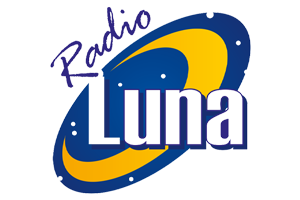
The car was already counted in the GDP in 1993 when it was first produced and sold. The fact that it changed hands in 2015 does not create any new economic activity that would be included in the GDP. Paper money comes in many denominations, which allows you to carry large amounts of legal tender without having to move large, bulky forms of money.
Balancing off Accounts Process
- Balance c/f is just an entry used in calculating that the closing balance is $19,100 on the debit side.
- This improves management’s ability to adjust to market changes.
- The price elasticity of demand for people who use coupons is _____ elastic than for other consumers because coupon users _____.
- Market segmentation is the process of identifying large product markets, segmenting them, and then choosing target markets and creating appropriate marketing strategies.
- On January 3, there was a debit balance of $20,000 in the Cash account.
- The balance at the end of an accounting period is known as the ending balance or closing balance.
- The consolidated cost of goods sold for 2021 was $2,280,000 due to a consolidating adjustment for intra-entity transfers less intra-entity gross profit in McCready’s ending inventory.
T Accounts are also used for income statement accounts as well, which include revenues, expenses, gains, and losses. For different accounts, debits and credits can mean either an increase or a decrease, but in a T Account, the debit is always on the left side and credit on the right side, by convention. If the accounts receivable account used above is followed through to the next accounting period it would look as follows. The account balance at the start of an accounting period is referred to as the beginning balance or the opening balance. The balance at the end of an accounting period is known as the ending balance or closing balance.
T-Account Opening and Closing Balances
At the end of each accounting period (month or year) a brief calculation is done to work out the closing balance of the account. Where MPL is the additional units of real estate sold by one additional agent and MR is the additional revenue generated by one additional unit of real estate sold. During 2021, Kenzie made several sales of inventory to McCready. The cost and sales price of the goods were $150,000 and $220,000, respectively.
Cash: 14,600, 920, 220
Unanticipated inflation also hurts people whose sole source of income is from social security benefits because these benefits are typically adjusted for inflation based on a fixed formula. If inflation is higher than anticipated, then the cost of living adjustment may not keep up with the increase in prices, leading to a decline in the purchasing t accounts power of social security benefits. The correct answer is option (a) Cash Flow from Operating Activities. The reduction in the prepaid insurance account and recording of insurance expense are adjusting entries that have no direct impact on the cash flow. Which of the following statements regarding terrorism insurance is (are) true?
When there is unanticipated inflation, it hurts borrowers because they will have to pay back loans with dollars that have less purchasing power than when they borrowed the money. On the other hand, it helps lenders as they receive more dollars in repayment than they lent out, and the purchasing power of the dollars received is greater than the dollars lent out. Inflation refers to a general increase in prices for goods and services in an economy over time, which means that each unit of currency buys fewer goods and services.
Colfax Market

This similarity extends to other retailers, from clothing stores to sporting goods to hardware. No matter the size of a company and no matter the product a company sells, the fundamental accounting entries remain the same. You can see that a journal has columns labeled debit and credit. The debit is on the left side, and the credit is on the right.

Formatting When Recording Journal Entries
Once again, debits to revenue/gain decrease the account while credits increase the account. Putting all the accounts together, we can examine the following. The balance on a permanent account continues to the next accounting period. The next periods transactions are added to the balance brought down and at the end of the period the balancing off accounts process is repeated. Suppose a business operates an accounts receivable account which as usual shows sales invoices to and cash receipts from customers. Prior to balancing off, the T account might look as follows.
The same process occurs for the rest of the entries in the ledger and their balances. We know from the accounting equation that assets increase on the debit side and decrease on the credit side. If there was a debit of $5,000 and a credit of $3,000 in the Cash account, we would find the difference between the two, which is $2,000 (5,000 – 3,000). The debit is the larger of the two sides ($5,000 on the debit side as opposed to $3,000 on the credit side), so the Cash account has a debit balance of $2,000. As the account is a temporary income statement account, after the account is balanced off, the brought down credit balance of 420 is transferred to the income statement using a closing journal.
Balancing T-Accounts
You will notice that the transactions from January 3 and January 9 are listed already in this T-account. The next transaction figure of $300 is added on the credit side. You will notice that the transaction from January 3 is listed already in this T-account. The next transaction figure of $4,000 is added directly below the $20,000 on the debit side. This is posted to the Unearned Revenue T-account on the credit side.

In the United States, a state can only tax a business if the business has a sufficient connection, or nexus, with that state. This connection can be established by a variety of factors, such as the location of the business, the presence of employees in the state, or the amount of sales made in the state. LO 3.1Identify the normal balance for each of the following accounts.








